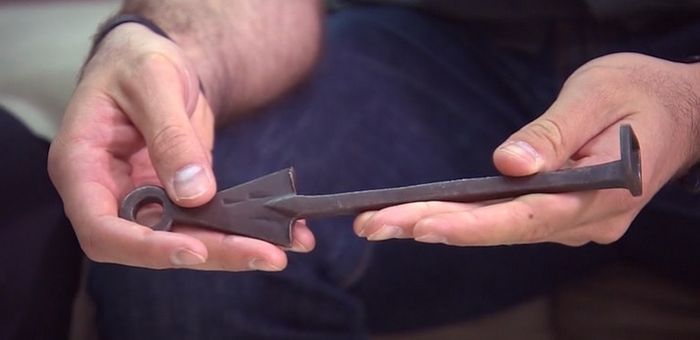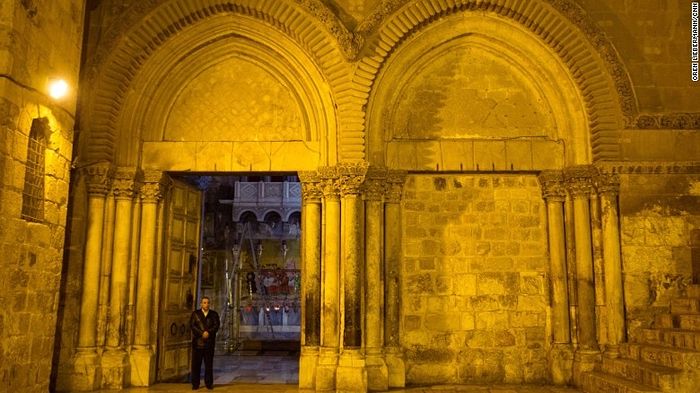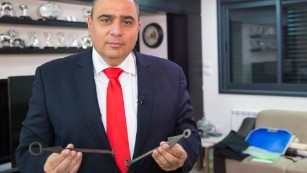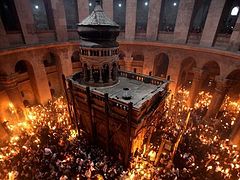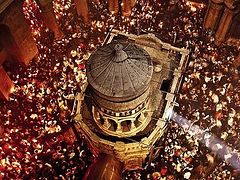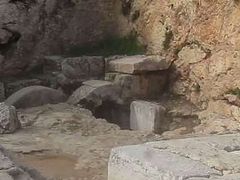Source: CNN
Jerusalem, March 27, 2016
The key to one of Christianity's holiest sites is held by a Muslim family, and it has been for centuries. This is more than just tradition. It is the very essence of Jerusalem, part of what makes the Old City's cultural and religious history so special.
We meet Adeeb Joudeh at the Jaffa Gate to the Old City. It is 3:30 a.m. At this hour, the tension of the city has melted into the darkness. The narrow alleys are eerily quiet. As Joudeh makes his way through the city's deserted streets, his footsteps are unnaturally loud, echoing off the walls of the empty stone streets.
He carries with him an ancient cast-iron key, some 500 years old. The key is 12 inches long, with a triangular metal handle and a square end.
It is the key to the Church of the Holy Sepulchre, where many believe Jesus Christ was crucified and entombed. The church is one of Christianity's holiest sites, and many Christian denominations share this holy space for prayer. Thousands of pilgrims from all over the world make a pilgrimage here for the Easter holidays. Few are aware of Joudeh's significance, and how important a part his Muslim ancestors have played in the story of this holy place.
Joudeh's family has held the key in their protection for generations. In his house, Joudeh keeps a binder full of pictures of his grandfather and great-grandfather who once held this sacred task, and his family has kept the historic contracts bestowing upon his family this job, written on parchment and signed in golden ink. The oldest dates back to 1517.
"This is the family heritage," Joudeh says, smiling as he talks. "It's all we own as a family, and this is an honor not only for our family. This is an honor for all Muslims in the world."
Joudeh pulls one of the contracts out of its protective plastic and hands it to me. He implores me to run my finger along the ancient stamp of the Turkish sultan, dating back to the Ottoman rule of Jerusalem. Little specks of gold come off on my finger.
Cooperation is cemented in an old contract
Then he hands me the key to the Church of the Holy Sepulchre. In fact, he hands me two keys. The "new" one has been in use for 500 years. The old one broke after centuries of use.
"This one is 850 years old," Joudeh says, pointing at the older key.
This task fell to Joudeh's ancestors as a way of maintaining a neutral guardian of the Church of the Holy Sepulchre, since the church is split between multiple Christian denominations, including Armenian Orthodox, Greek Orthodox, Franciscans, and more. He learned the obligations and responsibilities of guarding the key from his father, just as he will pass it on to his son.
"What we pass to the next generations is not only the key, but also the way you respect other religions."
This agreement between Joudeh's Muslim ancestors and the Christians has helped build cooperation between the religions, Joudeh says.
"For me, the source of coexistence for Islamic and Christian religions is the Church of the Holy Sepulchre, and that was when Umar ibn Khattab took the keys of Jerusalem from Patriarch Sophronius and gave security and safety to Christians in the region. We coexist and pass peace and love, which is the real Islamic religion." He references history from 1,400 years ago, when Umar ibn Khattab, a Muslim, made an agreement with Sophronius, a Christian, to grant the Christians right of free worship in Jerusalem. To Joudeh, this history is still alive today, and it is his obligation to carry it on.
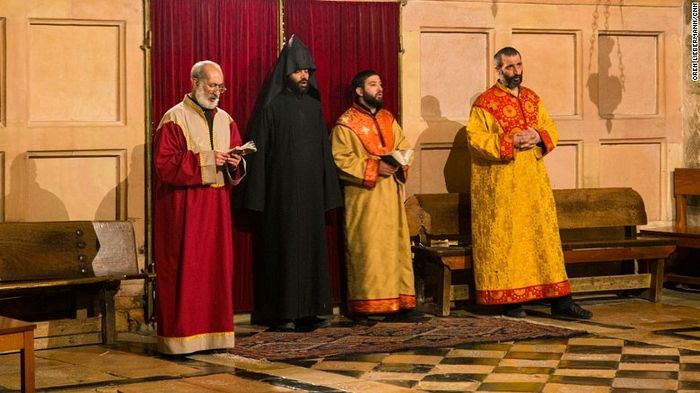 Armenian Orthodox Christians pray on Holy Thursday inside the Church of the Holy Sepulchre, facing the tomb of Jesus Christ.
Armenian Orthodox Christians pray on Holy Thursday inside the Church of the Holy Sepulchre, facing the tomb of Jesus Christ.
Joudeh does not carry this obligation alone. Although he is in charge of protecting and holding the key, another Muslim family is in charge of opening the door and allowing the faithful to enter the church. That responsibility now falls to Wajeeh Nuseibeh.
When Nuseibeh arrives at the church early in the morning, he takes the key from Joudeh, and climbs a small wooden ladder to unlock the top lock. Then he steps off the ladder to unlock the lower lock. He swings the church doors ajar, and the church is open to visitors. The entire process is repeated each evening, when the church is locked.
The two Muslim families have shared this responsibility for centuries, protecting the holy site and keeping it open to the Christian faithful. It is a model of coexistence in a city filled with tension, leading the way in interfaith cooperation, as it has been for hundreds of years.

